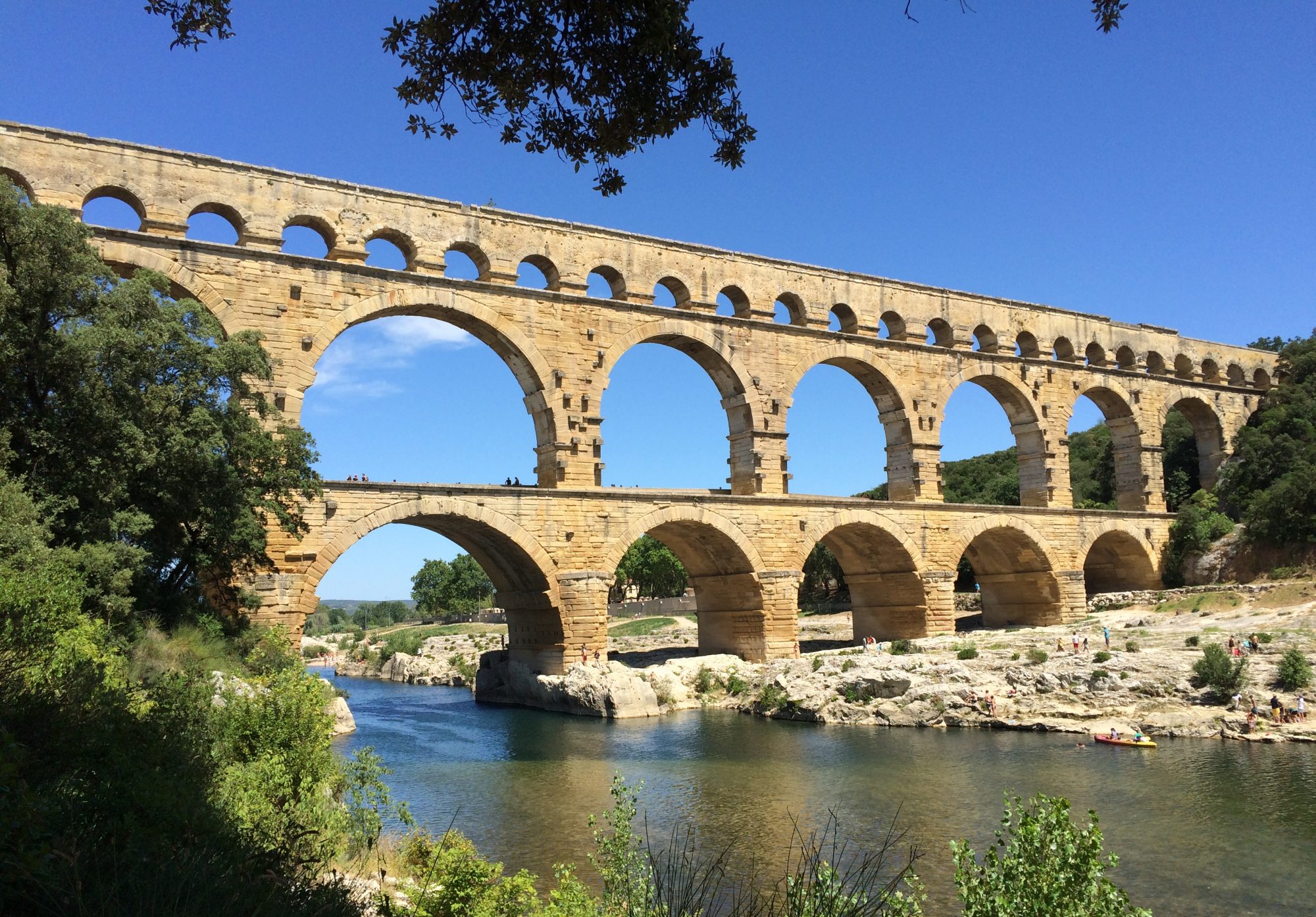Projekttitel: eManual Alte Geschichte
Modul [optional]:
Autor_in: Tacitus
Lizenz: CC-BY-NC-SA
Tac. Ann. XV, 38-42 – Original:
38. Sequitur clades, forte an dolo principis incertum (nam utrumque auctores prodidere), sed omnibus quae huic urbi per violentiam ignium acciderunt gravior atque atrocior. initium in ea parte circi ortum quae Palatino Caelioque montibus contigua est, ubi per tabernas, quibus id mercimonium inerat quo flamma alitur, simul coeptus ignis et statim validus ac vento citus longitudinem circi corripuit. neque enim domus munimentis saeptae vel templa muris cincta aut quid aliud morae interiacebat. impetu pervagatum incendium plana primum, deinde in edita adsurgens et rursus inferiora populando, antiit remedia velocitate mali et obnoxia urbe artis itineribus hucque et illuc flexis atque enormibus vicis, qualis vetus Roma fuit. ad hoc lamenta paventium feminarum, fessa aetate aut rudis pueritiae aetas, quique sibi quique aliis consulebant, dum trahunt invalidos aut opperiuntur, pars mora, pars festinans, cuncta impediebant. et saepe dum in tergum respectant lateribus aut fronte circumveniebantur, vel si in proxima evaserant, illis quoque igni correptis, etiam quae longinqua crediderant in eodem casu reperiebant. postremo, quid vitarent quid peterent ambigui, complere vias, sterni per agros; quidam amissis omnibus fortunis, diurni quoque victus, alii caritate suorum, quos eripere nequiverant, quamvis patente effugio interiere. nec quisquam defendere audebat, crebris multorum minis restinguere prohibentium, et quia alii palam faces iaciebant atque esse sibi auctorem vociferabantur, sive ut raptus licentius exercerent seu iussu.
39. Eo in tempore Nero Antii agens non ante in urbem regressus est quam domui eius, qua Palatium et Maecenatis hortos continuaverat, ignis propinquaret. neque tamen sisti potuit quin et Palatium et domus et cuncta circum haurirentur. sed solacium populo exturbato ac profugo campum Martis ac monumenta Agrippae, hortos quin etiam suos patefecit et subitaria aedificia extruxit quae multitudinem inopem acciperent; subvectaque utensilia ab Ostia et propinquis municipiis pretiumque frumenti minutum usque ad ternos nummos. quae quamquam popularia in inritum cadebant, quia pervaserat rumor ipso tempore flagrantis urbis inisse eum domesticam scaenam et cecinisse Troianum excidium, praesentia mala vetustis cladibus adsimulantem.
40. Sexto demum die apud imas Esquilias finis incendio factus, prorutis per immensum aedificiis ut continuae violentiae campus et velut vacuum caelum occurreret. necdum positus metus aut redierat plebi spes: rursum grassatus ignis patulis magis urbis locis; eoque strages hominum minor, delubra deum et porticus amoenitati dicatae latius procidere. plusque infamiae id incendium habuit quia praediis Tigellini Aemilianis proruperat videbaturque Nero condendae urbis novae et cognomento suo appellandae gloriam quaerere. quippe in regiones quattuordecim Roma dividitur, quarum quattuor integrae manebant, tres solo tenus deiectae: septem reliquis pauca tectorum vestigia supererant, lacera et semusta.
Projekttitel: eManual Alte Geschichte
Modul [optional]:
Übersetzung: Alfred John Church, William Jackson Brodribb
Lizenz: CC-BY-NC-SA
Übersetzung:
A disaster followed, whether accidental or treacherously contrived by the emperor, is uncertain, as authors have given both accounts, worse, however, and more dreadful than any which have ever happened to this city by the violence of fire. It had its beginning in that part of the circus which adjoins the Palatine and Cælian hills, where, amid the shops containing inflammable wares, the conflagration both broke out and instantly became so fierce and so rapid from the wind that it seized in its grasp the entire length of the circus. For here there were no houses fenced in by solid masonry, or temples surrounded by walls, or any other obstacle to interpose delay. The blaze in its fury ran first through the level portions of the city, then rising to the hills, while it again devastated every place below them, it outstripped all preventive measures; so rapid was the mischief and so completely at its mercy the city, with those narrow winding passages and irregular streets, which characterised old Rome. Added to this were the wailings of terror-stricken women, the feebleness of age, the helpless inexperience of childhood, the crowds who sought to save themselves or others, dragging out the infirm or waiting for them, and by their hurry in the one case, by their delay in the other, aggravating the confusion. Often, while they looked behind them, they were intercepted by flames on their side or in their face. Or if they reached a refuge close at hand, when this too was seized by the fire, they found that, even places, which they had imagined to be remote, were involved in the same calamity. At last, doubting what they should avoid or whither betake themselves, they crowded the streets or flung themselves down in the fields, while some who had lost their all, even their very daily bread, and others out of love for their kinsfolk, whom they had been unable to rescue, perished, though escape was open to them. And no one dared to stop the mischief, because of incessant menaces from a number of persons who forbade the extinguishing of the flames, because again others openly hurled brands, and kept shouting that there was one who gave them authority, either seeking to plunder more freely, or obeying orders.
Nero at this time was at Antium, and did not return to Rome until the fire approached his house, which he had built to connect the palace with the gardens of Mæcenas. It could not, however, be stopped from devouring the palace, the house, and everything around it. However, to relieve the people, driven out homeless as they were, he threw open to them the Campus Martius and the public buildings of Agrippa, and even his own gardens, and raised temporary structures to receive the destitute multitude. Supplies of food were brought up from Ostia and the neighbouring towns, and the price of corn was reduced to three sesterces a peck. These acts, though popular, produced no effect, since a rumour had gone forth everywhere that, at the very time when the city was in flames, the emperor appeared on a private stage and sang of the destruction of Troy, comparing present misfortunes with the calamities of antiquity.
At last, after five days, an end was put to the conflagration at the foot of the Esquiline hill, by the destruction of all buildings on a vast space, so that the violence of the fire was met by clear ground and an open sky. But before people had laid aside their fears, the flames returned, with no less fury this second time, and especially in the spacious districts of the city. Consequently, though there was less loss of life, the temples of the gods, and the porticoes which were devoted to enjoyment, fell in a yet more widespread ruin. And to this conflagration there attached the greater infamy because it broke out on the Æmilian property of Tigellinus, and it seemed that Nero was aiming at the glory of founding a new city and calling it by his name. Rome, indeed, is divided into fourteen districts, four of which remained uninjured, three were levelled to the ground, while in the other seven were left only a few shattered, half-burnt relics of houses.
Projekttitel: eManual Alte Geschichte
Modul [optional]:
Autor_in: Falk Wackerow
Lizenz: CC-BY-NC-SA
Tac. Ann. XV, 38-42
Leitfragen:
1) War Nero in den Brand verwickelt?
2) Was verrät die Stelle über die Sicht auf den römischen Kaiser?
3) Welche Folgen hatte die Katastrophe?
Kommentar:
Der gewaltige Brand, der Rom in der Jahresmitte 64 v. Chr. heimsuchte, verwüstete große Teile der Metropole und machte die meisten seiner Bewohner obdachlos. Verheerende Brände waren bis in die Neuzeit nichts Ungewöhnliches, einen Feuersturm dieses Ausmaßes hatte die Stadt jedoch noch nicht erlebt. Nach einer Woche stand in drei Distrikten kein Stein mehr auf dem anderen, in weiteren sieben war die Mehrzahl der Gebäude zerstört, nur vier Bezirke blieben gänzlich verschont. Es ist unklar, ob Nero Feuer legen ließ, um die Stadt zu zerstören und an ihrer Stelle eine neue, nach ihm benannte Kapitale zu erbauen. Viele, vor allem spätere Quellen behaupten dies. In der Forschung ist jedoch nicht unumstritten, ob der „schlechte“ Kaiser Nero tatsächlich für den Ausbruch des Brandes verantwortlich war. Er war währenddessen nicht in Rom, könnte sich also präventiv in Sicherheit begeben haben. Auf den Trümmern ließ er einen prächtigen neuen Palast errichten, die Domus Aurea, deren Überreste noch heute zu sehen sind. Im dicht bebauten Rom war Baugrund Mangelware, ein Großfeuer konnte den Platz für ein solches Projekt schaffen. Selbst wenn Nero jedoch den Auftrag zur Brandstiftung gegeben haben sollte, hat er sicherlich nicht mit dem gewaltigen Ausmaß der Zerstörung gerechnet. Das heiße, trockene Wetter und der kräftig Wind heizten das Feuer stark an. Neros Palast mit seiner unersetzlichen Sammlung an Kunstschätzen und viele öffentliche Gebäude, für deren Wiederaufbau letztlich Neros Staatskasse aufkommen musste, gingen in den Flammen zugrunde. In aller Eile ließ der Kaiser für die obdachlose Bevölkerung Notunterkünfte bereitstellen, der Getreidepreis wurde gesenkt. Das Feuer war die perfekte Katastrophe für diejenigen, die den ungeliebten Kaiser loswerden wollten. Ein einfaches Gerücht verbreitete sich in Windeseile. Tacitus als der ausführlichste Berichterstatter derweil teilt den Bericht über den Brand in zwei Teile. Für den ersten stellt er die Unschuld des Kaisers fest, der Ursprung des Feuers habe in einem Unglück im Circus Maximus gelegen. Nach fünf Tagen habe der Kaiser jedoch in einem bereits niedergebrannten Stadtteil am Fuß des Esquilin erneut Feuer legen lassen, um auch noch die dort befindlichen bisher unbeschädigten Tempel zu beseitigen. Nero habe also das ohnehin wütende Feuer genutzt und es in einem bestimmten Teil der Stadt weiter angeheizt, um seine Vision eines neuen Rom wahr werden zu lassen. In diesem Vorwurf kommt ein Aspekt der negativen Sicht auf den letzten Vertreter des julisch-claudischen Geschlechts zum Ausdruck. Größenwahn und Rücksichtslosigkeit, vermischt mit einem krankhaften unrömischen Geist, der sich an Kunst und Kultur erfreute. Tacitus und andere überliefern das Gerücht, der Kaiser habe während des Feuers die Vernichtung Trojas besungen und damit die gegenwärtige Katastrophe mit dem vermeintlich historischen Brand der legendären Stadt gleichgesetzt. Solcherart Gerüchte, ob wahr oder erfunden, machten den Kaiser zusätzlich verhasst. Als Entgegnung auf die Vorwürfe der Brandstiftung erklärte Nero die Christen zu Schuldigen und ließ sie verfolgen. In einem Edikt verbot er ihnen zudem die Religionsausübung. Von allen Maßnahmen Neros war dies laut Tertullian die einzige, die nicht von seinen Nachfolgern rückgängig gemacht wurde. Auch Sueton zählte die Verfolgung der Christen zu den wenigen guten Taten Neros. Übereinstimmend berichten die Quellen, dass Nero das Zeitalter der Unterdrückung der Christen einläutete, wobei mehrere (neben Cassius Dio interessanterweise auch frühchristliche Quellen) die neronische Christenverfolgung nicht erwähnen.

